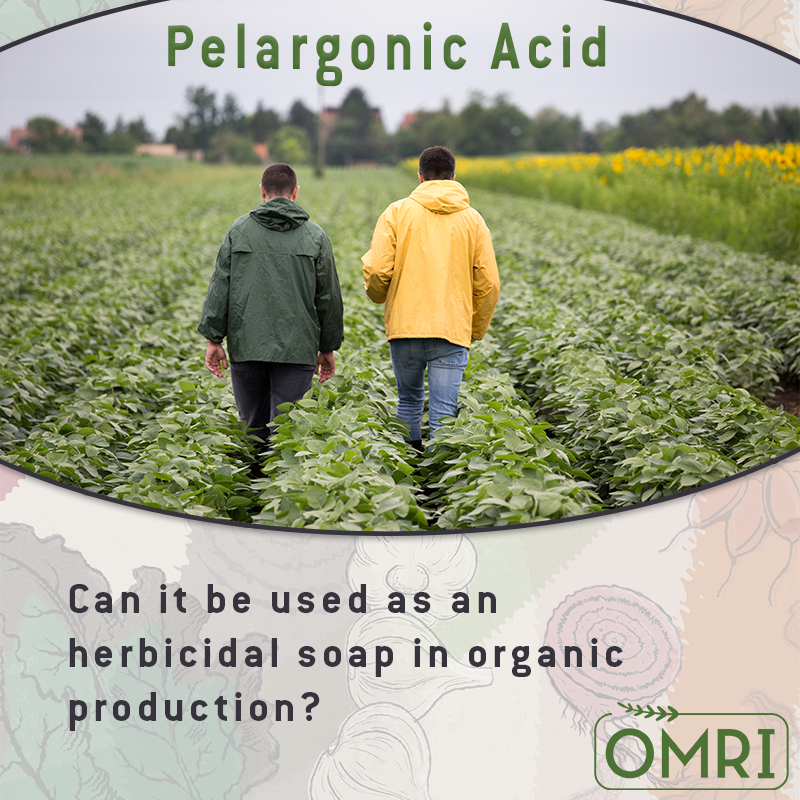Pelargonic Acid
 What is the status of pelargonic acid? Can it be used as an herbicidal soap in organic production?
What is the status of pelargonic acid? Can it be used as an herbicidal soap in organic production?
By Brian Baker
Pelargonic acid, also known as nonanoic acid, occurs naturally in many animals and plants, including geranium (Pelargonium spp.). Commercially, however, pelargonic acid is manufactured using a synthetic process; to produce the active ingredient, various sources of fats and oils are reacted with ozone, and are then separated by fractional distillation. The ozonation step renders the product synthetic, which makes the material ineligible for use in organic agriculture under USDA organic standards.
Pelargonic acid is also not permitted as an herbicidal soap. Soaps are defined as alkali salts of fatty acids, and while pelargonic acid is a fatty acid, it is not an alkali salt of a fatty acid. One can react pelargonic acid with potassium hydroxide to create potassium pelargonate (an alkali salt). However, pelargonic acid by itself does not possess the properties of a soap.
Because it is commercially prepared as a synthetic substance and does not appear on the National List of allowed synthetics, pelargonic acid is prohibited for use in organic production. A petition to the National Organic Standards Board (NOSB) requesting that the material be added to the National List at 7 CFR 205.601(b) “as herbicides, weed barriers, as applicable” was rejected. The decision was based on the rationale that soap-based herbicides is the only category of synthetic herbicide allowed by the Organic Foods Production Act (OFPA). Since pelagonic acid is not a soap, the material is not eligible for use in USDA organic production.
This article originally appeared in the summer 2007 issue of the OMRI Materials Review Newsletter, and was revised in October 2021 by Technical Director Doug Currier.








